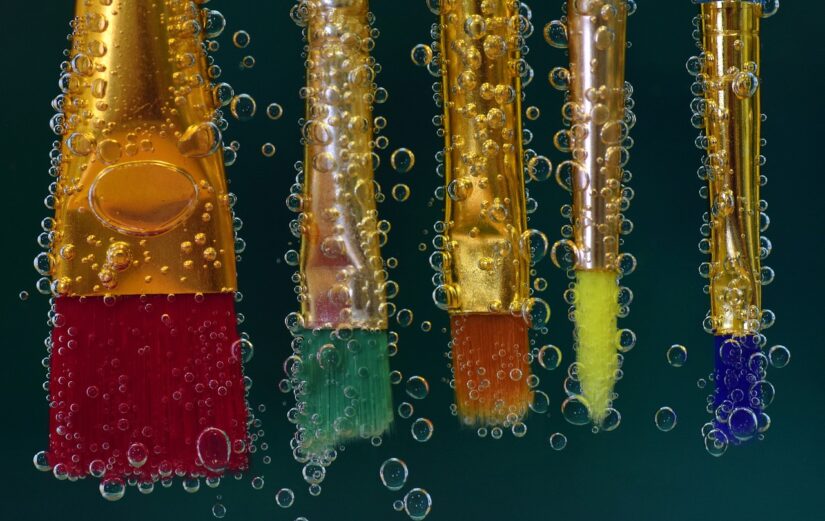Media artists are using light, motion, and interaction to create truly immersive experiences. From interactive installations that react to sound and movement to gallery spaces lit with glimmering light sculptures, these artworks are captivating audiences in new ways. Through their creative works, media artists are pushing the boundaries of how we interact with our physical environments and explore the beauty of technology-based art. In this article, we’ll look at some of the groundbreaking installations that are transforming how we experience art.
Exploring the Role of Light in Immersive Media Art
Immersive media art is an ever-evolving form of art that uses a combination of light, motion, and interaction to create unique experiences for viewers. Light plays a vital role in helping to create the atmosphere and ambience that make up these immersive installations. Through its use of different colors, intensities, and shapes, light can be used to alter the perceived space in which the artwork exists.
One artist who is exploring the use of light in immersive media art is Dutch artist Daan Roosegaarde. His works combine interactive technologies with traditional lighting to create mesmerizing installations that invite viewers to explore and interact with them. A notable example of his work is the “Dune” installation, which uses a combination of LEDs and motion sensors to create an ever-changing landscape of light and color.
Bringing Motion to Life in Immersive Media Art
Motion is an essential component of immersive media art, as it allows viewers to explore the artwork in a more dynamic way. Through its use of movement, motion can help to bring installations to life and create an experience that engages viewers on a deeper level.
One artist who has done pioneering work in this area is Japanese artist Ryoji Ikeda. His works use sound and light to create abstract environments that challenge viewers to explore their limits of perception. A notable example of his work is the “Asobi” installation, which uses projection mapping and soundscapes to evoke a sense of multi-dimensional movement.
Interactive Installations: Letting Viewers Explore for Them selves
Interactive installations are another key component of immersive media art, as they allow viewers to actively participate in the artwork by manipulating its elements. This can help create a deeper connection between viewers and the artwork, as they become more engaged with the creative process.
One example of an interactive installation is “Chroma Depth” by artist Julius Popp. This work uses sensors to detect and respond to viewers’ movements, creating an ever-changing landscape of lights and sounds. The work also features a tactile element, allowing viewers to interact with the artwork by touching its surface.
The Power of Interaction in Immersive Media Experiences
Interactive media experiences, such as virtual reality (VR), augmented reality (AR), and mixed reality (MR) are becoming increasingly popular in modern culture. By creating immersive and interactive media experiences for users, artists have the power to transcend the boundaries of physical space and create something unique that can be experienced by everyone. This type of experience allows viewers to interact with the art in a way that traditional art forms cannot, opening up a new realm of possibilities for media artists to explore.
Creating Multi-Sensory Experiences in Media Art
It is a visual medium that can be used to capture and convey ideas, stories, and emotions. While it has traditionally been used as a visual tool, more recently media artists have begun to explore the possibilities of creating multi-sensory experiences within their works. By incorporating elements such as sound, smell, touch, and motion into their works, media artists are able to create immersive and engaging experiences for viewers that will stay with them long after the experience has ended.
The Fusion of Technology and Art in Media Installations
The fusion of technology and art in media installations is an ever-evolving concept that continues to captivate and inspire audiences. This process often involves the use of visuals, audio, and interactive elements to create a unique immersive experience. These installations can range from video projections on walls or sculptures, light shows in public spaces, interactive digital displays, or large scale outdoor projections.
Crafting Narratives through Light, Motion, and Interaction
Media artists are constantly pushing the boundaries of what is possible within their artwork. By combining light, motion, and interaction, they are able to create captivating visual stories that engage viewers and create a lasting impact. Through these experiences, media artists can craft narratives that evoke emotion and inspire thought.
Exploring Immersive Experiences in Media Art
By combining motion-based technologies with sound, scent, tactile elements and traditional media such as photography and video, they can create captivating experiences that will stay with audiences long after the experience has ended.
